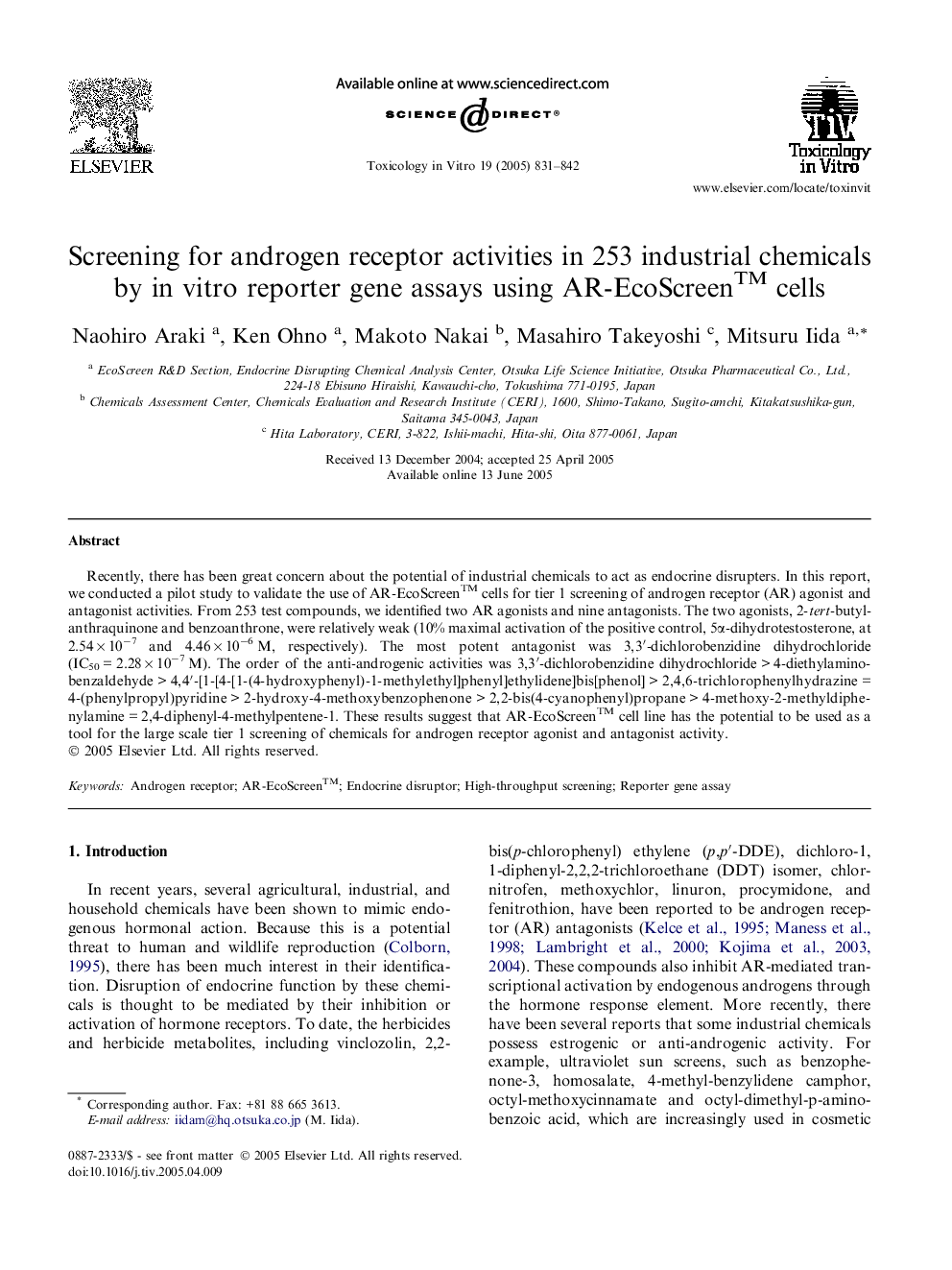| Article ID | Journal | Published Year | Pages | File Type |
|---|---|---|---|---|
| 9038416 | Toxicology in Vitro | 2005 | 12 Pages |
Abstract
Recently, there has been great concern about the potential of industrial chemicals to act as endocrine disrupters. In this report, we conducted a pilot study to validate the use of AR-EcoScreenTM cells for tier 1 screening of androgen receptor (AR) agonist and antagonist activities. From 253 test compounds, we identified two AR agonists and nine antagonists. The two agonists, 2-tert-butylanthraquinone and benzoanthrone, were relatively weak (10% maximal activation of the positive control, 5α-dihydrotestosterone, at 2.54 Ã 10â7 and 4.46 Ã 10â6 M, respectively). The most potent antagonist was 3,3â²-dichlorobenzidine dihydrochloride (IC50 = 2.28 Ã 10â7 M). The order of the anti-androgenic activities was 3,3â²-dichlorobenzidine dihydrochloride > 4-diethylaminobenzaldehyde > 4,4â²-[1-[4-[1-(4-hydroxyphenyl)-1-methylethyl]phenyl]ethylidene]bis[phenol] > 2,4,6-trichlorophenylhydrazine = 4-(phenylpropyl)pyridine > 2-hydroxy-4-methoxybenzophenone > 2,2-bis(4-cyanophenyl)propane > 4-methoxy-2-methyldiphenylamine = 2,4-diphenyl-4-methylpentene-1. These results suggest that AR-EcoScreenTM cell line has the potential to be used as a tool for the large scale tier 1 screening of chemicals for androgen receptor agonist and antagonist activity.
Related Topics
Life Sciences
Environmental Science
Health, Toxicology and Mutagenesis
Authors
Naohiro Araki, Ken Ohno, Makoto Nakai, Masahiro Takeyoshi, Mitsuru Iida,
